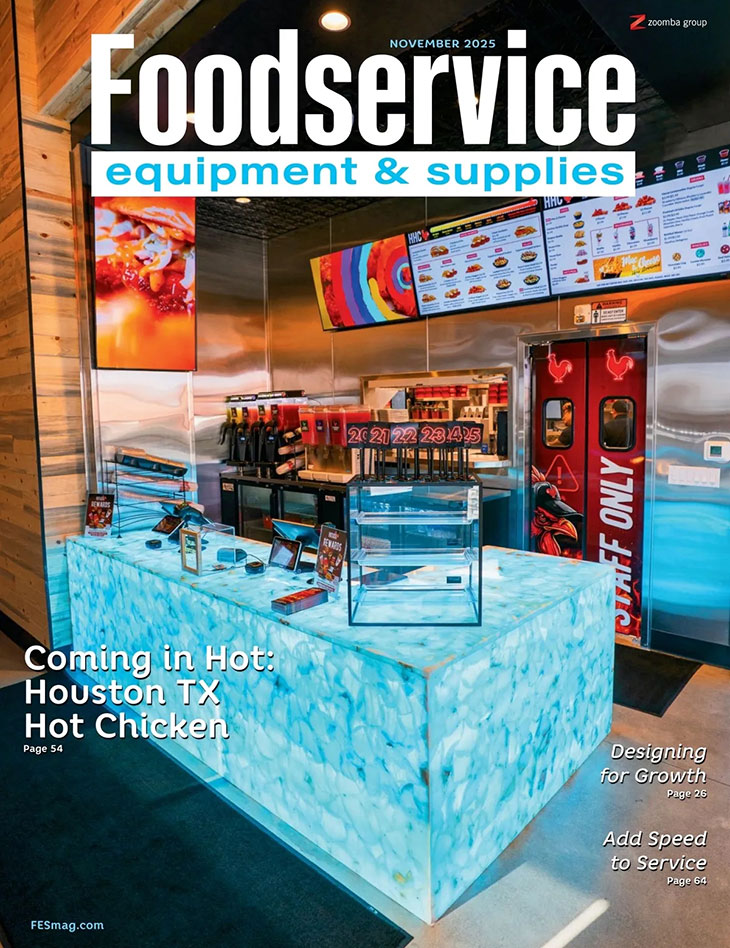While innovation remains a restaurant industry buzz word, deciding which innovations are right for a foodservice operation depends on the specific challenges the business faces in executing its brand promise.
While innovation remains a restaurant industry buzz word, deciding which innovations are right for a foodservice operation depends on the specific challenges the business faces in executing its brand promise.
Juan Martinez looks ahead to this weekend's National Restaurant Association show.
Menu innovation is a wonderfully dynamic topic but we should all realize that it does not have to be complicated.
On the surface, scratch cooking seems like a pretty straightforward process for most foodservice operators. But it is important to understand how scratch cooking impacts product consistency and quality, food safety, labor and more.
Menu innovation is neccessary for long-term success but it can create a chain reaction that negatively affects cutomer service. Juan Martinez reviews a few pitfalls and gives his expert advice on how to avoid them.
One can say that open kitchens are a trend, thanks in part, to the concept of transparency that fast-casual chains continue to incorporate into their designs. There is not much that you cannot see in a Five Guys or a Chipotle restaurant while ordering or standing in the dining room. Although such casual dining chains as Macaroni Grill and Carrabba's have had open kitchens since their inceptions, I have noticed a larger number of casual dining concepts making their back of the house visible to patrons in the front of the house by showing a lot more of the trials and tribulations of the kitchen operation.
Labor represents a cost all foodservice operators must address and political and social unrest can inadvertently affect this are. In this blog post, consultant Juan Martinez explores the way operators can react to the issues of the day and the potential positive and negative affects these steps can have on their businesses.
Foodservice operators that want to maximize their labor investment and avoid under-staffing during peak business periods should pay close attention to their staff's work content, of course, but also the way they design and equip work stations.
Let industrial engineering techniques inspire you.
In this blog post I would like to explore the relationship between two different yet related design approaches and methodologies: analytical and empirical.
Foodservice design can be an intriguing balancing act as designers look to accommodate the needs of the front and back of the house without compromising either. In this post, Juan Martinez takes a philosophical approach at finding balance in foodservice design.
People often make New Year's resolutions to improve their personal lives. But what about our professional lives? It's a good idea to look at your work life and the factors that impact it with the hopes of making plans to position yourself and your organization for continued growth and evolution, writes Juan Martinez, PhD, PE, FCSI in his latest blog post.
Developing a new prototype is a project that can be equally exciting and daunting. But how do foodservice professionals know when their prototype development efforts are complete? Well, the answer is trickier than you might think.
As a business leader you are undoubtedly aware that the Affordable Healthcare Act is about to take effect. But that seems to be where most people's understanding of the legislation begins and ends. That's because this legislation is highly complex and to someone outside of Washington, D.C., it seems like a maze of regulations that are indiscriminately and independently linked to each other.
Energy-efficiency and better use of labor were among the key themes running through the 2013 National Restaurant Association Show in Chicago.
While the goal for most foodservice design is to enhance operational efficiency and guest experience, industry engineering processes can also enhance food safety when done right.

Foodservice Equipment & Supplies is the longest-running publication serving the decision-makers of the nearly $15 billion E&S industry.
View current digital issueWant to receive a FREE subscription to Foodservice Equipment & Supplies?
Subscribe to magazineFoodservice Equipment & Supplies (FE&S) is the one media source that connects equipment and supplies manufacturers and service providers with the full distribution channel including news, trends and best practices for foodservice equipment dealers, specifiers, operators, and supply chain partners.